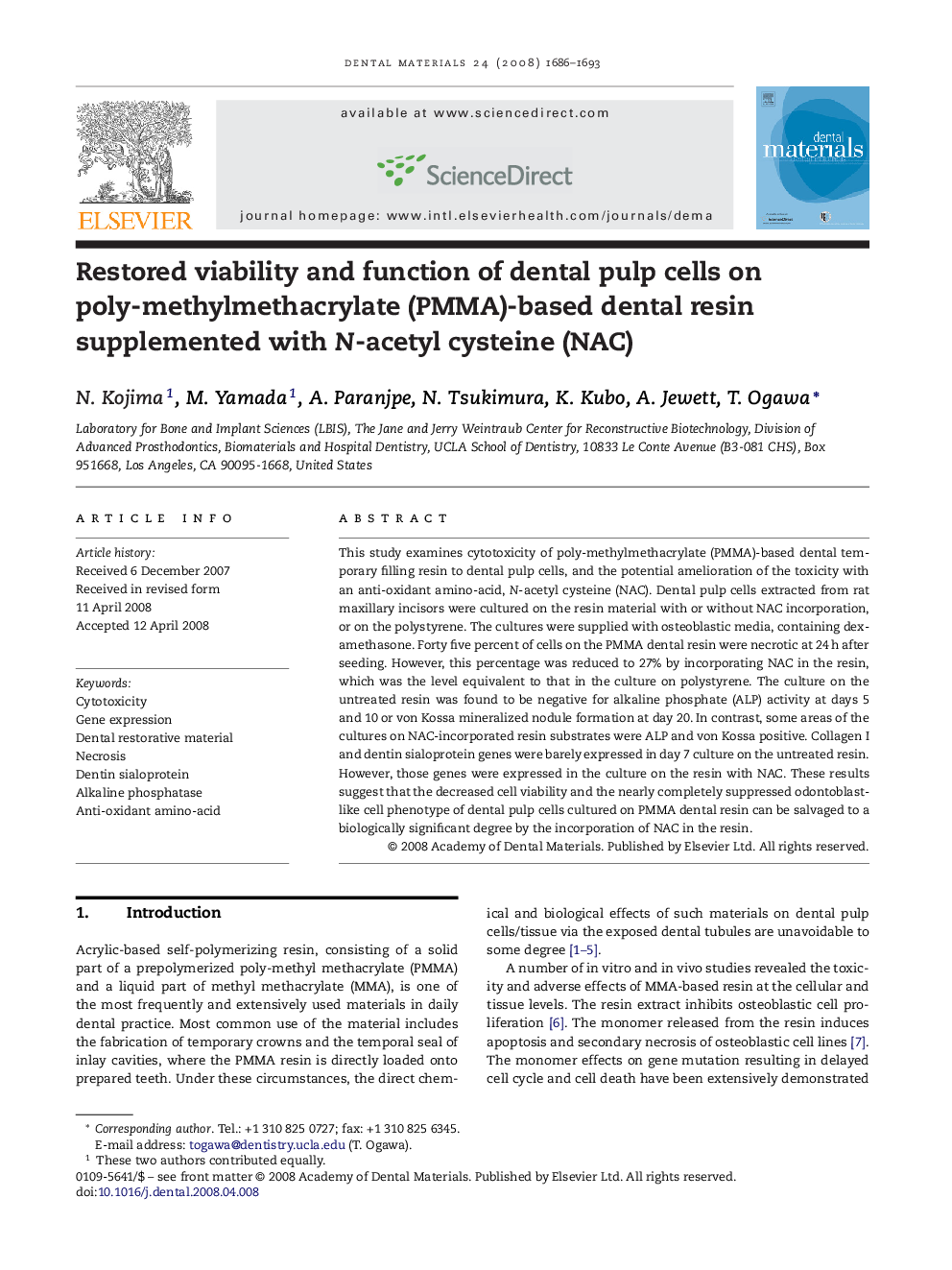| Article ID | Journal | Published Year | Pages | File Type |
|---|---|---|---|---|
| 1422919 | Dental Materials | 2008 | 8 Pages |
This study examines cytotoxicity of poly-methylmethacrylate (PMMA)-based dental temporary filling resin to dental pulp cells, and the potential amelioration of the toxicity with an anti-oxidant amino-acid, N-acetyl cysteine (NAC). Dental pulp cells extracted from rat maxillary incisors were cultured on the resin material with or without NAC incorporation, or on the polystyrene. The cultures were supplied with osteoblastic media, containing dexamethasone. Forty five percent of cells on the PMMA dental resin were necrotic at 24 h after seeding. However, this percentage was reduced to 27% by incorporating NAC in the resin, which was the level equivalent to that in the culture on polystyrene. The culture on the untreated resin was found to be negative for alkaline phosphate (ALP) activity at days 5 and 10 or von Kossa mineralized nodule formation at day 20. In contrast, some areas of the cultures on NAC-incorporated resin substrates were ALP and von Kossa positive. Collagen I and dentin sialoprotein genes were barely expressed in day 7 culture on the untreated resin. However, those genes were expressed in the culture on the resin with NAC. These results suggest that the decreased cell viability and the nearly completely suppressed odontoblast-like cell phenotype of dental pulp cells cultured on PMMA dental resin can be salvaged to a biologically significant degree by the incorporation of NAC in the resin.
